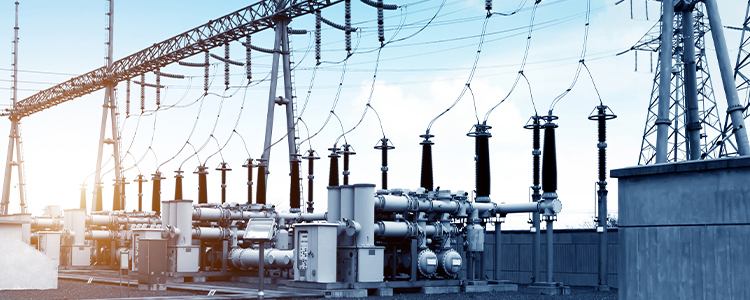- All
- Product Name
- Product Keyword
- Product Model
- Product Summary
- Product Description
- Multi Field Search


Views: 0 Author: Site Editor Publish Time: 2024-12-21 Origin: Site
In modern power systems, transformers are key components whose operational safety directly impacts the stability and reliability of the entire power network. To ensure the efficient and stable operation of transformers, a series of protection functions must be equipped. This article will explore several key transformer protection solutions, including overload protection, differential protection, oil temperature monitoring protection, and overcurrent protection.
Overload protection is an essential part of transformer protection, aimed at preventing damage to transformers caused by long-term overloading. When a transformer's load exceeds its design value, the overload protection system will activate, either reducing the load or issuing a warning to prevent overheating. This protection function typically works by monitoring the load in real time and setting reasonable thresholds to trigger protection actions.
Working Principle:
· Real-time monitoring of the transformer's load status.
· When the load exceeds the preset safe threshold, the protection system activates.
· Protective measures include load reduction or issuing warnings to avoid transformer overheating and damage.
Differential protection is one of the most accurate and sensitive forms of transformer protection, specifically designed to detect internal short-circuit faults. Based on the current difference between the two sides of the transformer, differential protection determines whether a fault has occurred. When a fault is detected, the protection system rapidly isolates the faulty circuit to prevent the fault from spreading.
Working Principle:
· Compare the current difference between the two sides of the transformer.
· When the current difference exceeds the preset value, the protection device quickly disconnects the circuit.
· Differential protection isolates the faulty area in time, preventing larger power outages or equipment damage.
Oil temperature monitoring protection is designed to prevent transformer failures caused by excessively high oil temperatures. High oil temperatures may lead to the aging of internal insulating materials or even fire hazards. Oil temperature monitoring protection works by continuously monitoring the transformer's oil temperature and activating protection measures such as activating fans or reducing the load if the temperature exceeds the preset range.
Working Principle:
· Real-time monitoring of transformer oil temperature using oil temperature sensors.
· When the oil temperature exceeds the safe range, the protection system takes action, such as activating cooling measures or load reduction.
· Ensures that the transformer operates within a safe temperature range, preventing temperature-related failures.
Overcurrent protection is primarily used to prevent damage to transformers caused by excessive current. Overcurrent protection can be divided into two types: instantaneous overcurrent protection and time-delayed overcurrent protection. Instantaneous overcurrent protection acts immediately when a fault occurs, while time-delayed overcurrent protection has a delay to avoid false tripping and ensures system stability.
Working Principle:
· Instantaneous overcurrent protection: The system immediately disconnects the circuit when abnormal current is detected, preventing equipment damage.
· Time-delayed overcurrent protection: The system applies a time delay to avoid tripping when the fault is momentary, thus protecting the system without unnecessary interruptions.
In addition, zero-sequence protection is used to detect grounding faults, utilizing zero-sequence current to effectively protect against ground faults in the electrical system.
Transformer protection functions should be selected and configured based on the transformer's rated capacity, operating environment, and the specific requirements of the power system. Generally, smaller transformers (up to 1250kVA) can be equipped with instantaneous overcurrent protection and overcurrent protection, while larger transformers (above 1250kVA) should be equipped with more comprehensive protection features, such as gas protection and differential protection.
· Smaller capacity (<1250kVA): Equipped with instantaneous overcurrent protection and overcurrent protection.
· Larger capacity (>1250kVA): Equipped with instantaneous overcurrent protection, overcurrent protection, and gas protection.
· Very large capacity (>6300kVA): Equipped with differential protection, instantaneous overcurrent protection, overcurrent protection, and gas protection.
Transformer protection systems are critical components in ensuring the safe operation of transformers. Proper configuration and utilization of various protection functions can significantly enhance the stability and safety of power systems. Overload protection, differential protection, oil temperature monitoring protection, and overcurrent protection each play an indispensable role, helping transformers maintain stable and reliable operation under different working conditions and in the event of faults.
With the continuous development of power systems and technological advancements, new protection technologies and solutions are emerging. By continuously improving and optimizing transformer protection functions, we can ensure the long-term and stable operation of transformer equipment, providing more efficient and safe protection for the power system.
Short Circuit Failure in A 3500kVA Oil-Immersed Wind Power Transformer Due to Cost Reduction
Causes and Detection Methods of Partial Discharge in Oil-Immersed Transformers
Essential Components and Functions of An Oil-Immersed Transformer
How a Transformer Upgrade Can Save Your Business Over $100,000